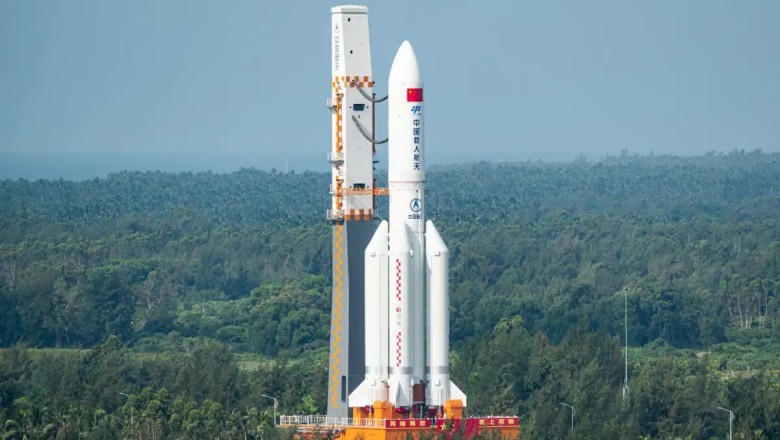
views
The final module required to complete China's Tiangong space station has successfully docked with the core structure, state media say, a key step in Beijing's ambitious space exploration plans. China's third and final module docked with its permanent space station early Tuesday, state broadcaster CCTV said, citing the China Manned Space Agency.
The module, named Mengtian, meaning "heavenly dream," was launched Monday on a Long March 5B rocket from Launch Center Wenchang on China's tropical island of Hainan. CCTV reports. It arrived at the Tiangong space station at 4:27 a.m. Beijing time on Tuesday (8:27 p.m. GMT Monday). The entire launch and docking process with the space station took about 13 hours and spans more than a decade. Efforts by China to maintain a permanent manned presence in orbit.
Beijing's completion of the station would indicate that "China is now a player in space on a par with the United States, Russia and Europe," independent Chinese space analyst Chen Lan told Agence France-Presse. "It's always good to see new players.
Competition will always accelerate innovation." According to China's Xinhua News Agency, the Mengtian module will form the basic T-shaped configuration together with the Tianhe core module and the Wentian laboratory module. Space Station. Together they are known as the Tiangong, or "Heavenly Palace".
On Tuesday, the Mengtian laboratory module successfully docked with the combination of China's Tiangong space station. It will allow for more experiments, especially those that can only be done in a microgravity environment.
Tiangong Station is one of the crown jewels of the well-funded space program that has landed robotic rovers on Mars and the Moon, making the country the third to put humans into orbit. China is trying to catch up with the space powers USA and Russia. the International Space Station (ISS) since 2011, when Washington barred NASA from dealing with Beijing.
When completed, the Tiangong space station is expected to have a mass of 90 tons, about a quarter that of the ISS, or about the size of the Soviet-built Mir station, which has orbited the Earth since the 1990s from 1980 to 2001.
The Manned Space Agency said Tiangong was populated by three crew members, or taikonauts, including one woman. Chen Dong, Cai Xuzhe and Liu Yang came aboard in early June for a six-month stay. Conduct additional experiments. After Mengtian's arrival, an unmanned cargo ship from Tianzhou is scheduled to dock at the station next month.
Another manned mission is planned for December. At this point, crews may overlap as Tiangong has enough space for six people. Next year, Beijing plans to launch the Xuntian space telescope with a field of view 350 times that of NASA's Hubble space. Telescope.




















Comments
0 comment